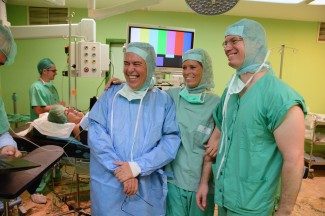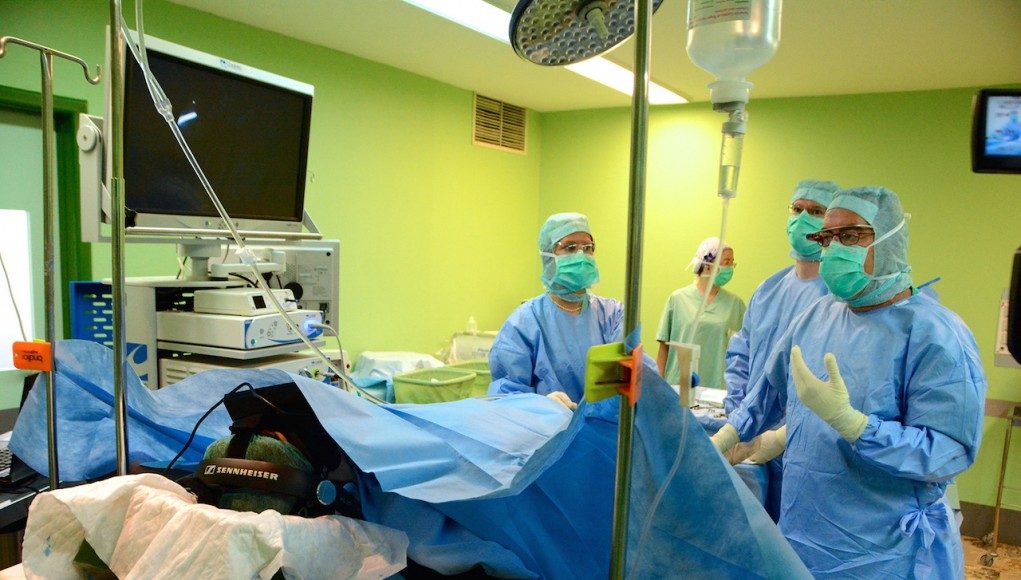One of the joys of writing about reporting from the cutting-edge of a newly reborn technology like virtual reality is that you’re constantly being surprised as what people are finding to do with it. Almost weekly there’s some innovation taking VR in yet another direction I’d not yet considered. Well, here’s one more.
 Surgery of any kind is by definition invasive and traumatic and the process can be an incredibly stressful experience for some patients. Those operations that can be performed under general anaesthetic mean that the patient is unaware of the work being performed on them, but local anaesthetic of course leaves them wide awake throughout the operation. This can be at the very least a disconcerting experience and at worst terrifying.
Surgery of any kind is by definition invasive and traumatic and the process can be an incredibly stressful experience for some patients. Those operations that can be performed under general anaesthetic mean that the patient is unaware of the work being performed on them, but local anaesthetic of course leaves them wide awake throughout the operation. This can be at the very least a disconcerting experience and at worst terrifying.
Music during operations has been used for years to pacify patients during operations, it also has beneficial effects for the Surgeon too. The use of virtual reality would then be a logical progression of this practise, potentially offering the opportunity to transport the patient’s aural and visual senses somewhere else entirely for the duration of an operation.
Well, a surgeon (Orthopedic surgeon, Gerardo Garcés) working at the Hospital Perpetuo Soccorro in Gran Canaria, Spain have taken this idea and run with it – performing the first operation where the patient wears an Oculus Rift and a pair of headphones for the duration. What’s more, the operation itself was streamed live thanks to the operating surgeon wearing Google Glass throughout.
 Isolating the patient from the alienating atmosphere of your typical operating theatre seems like an excellent way to improve their mental state during and after an operation. Although, choosing the experience that best matches the person might be tricky – you could foresee situations where the patient becomes so engrossed in the VR experience that involuntary physical movement makes surgery dangerous.
Isolating the patient from the alienating atmosphere of your typical operating theatre seems like an excellent way to improve their mental state during and after an operation. Although, choosing the experience that best matches the person might be tricky – you could foresee situations where the patient becomes so engrossed in the VR experience that involuntary physical movement makes surgery dangerous.
Nevertheless, it’s another dovetailing of potential uses for VR that go far beyond the current focus on gaming, and a further reminder of the technology’s rapid re-introduction into the Zeitgeist.
Thanks to the folks over at www.droiders.com who made us aware of the story, visit their site here.







